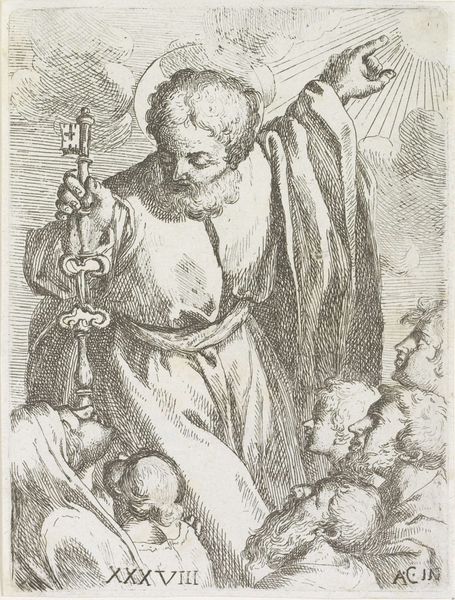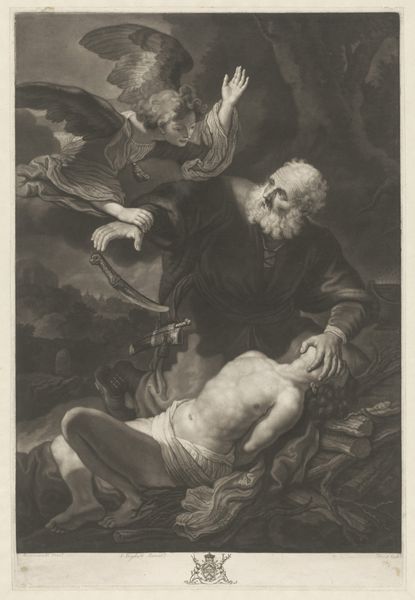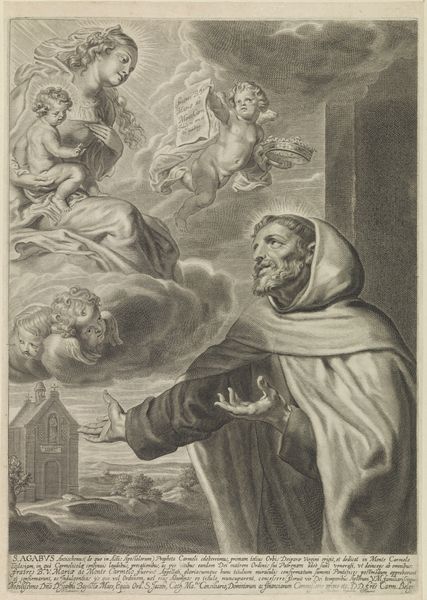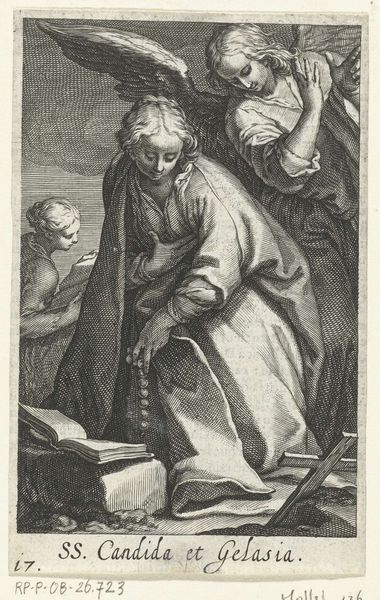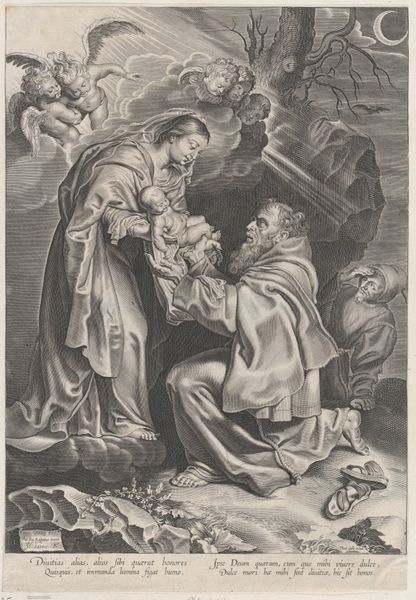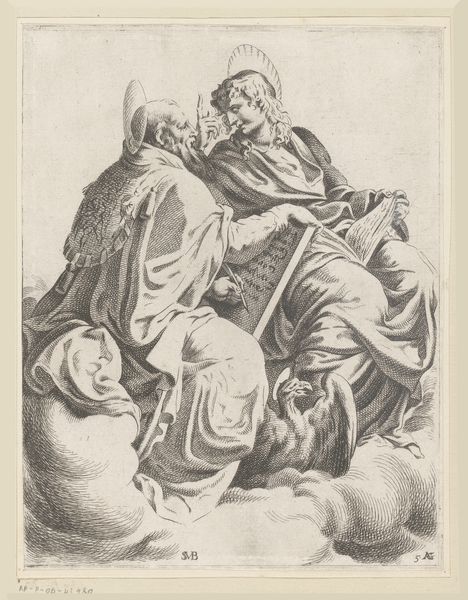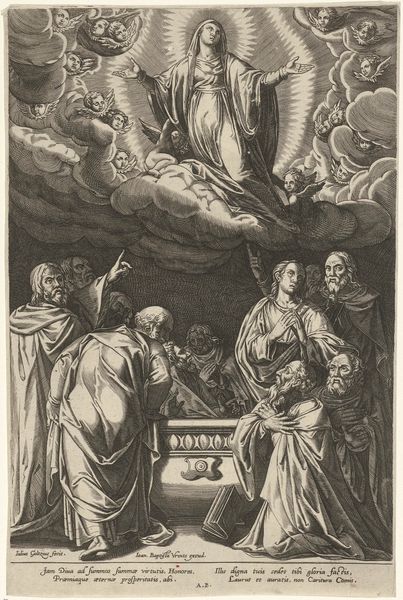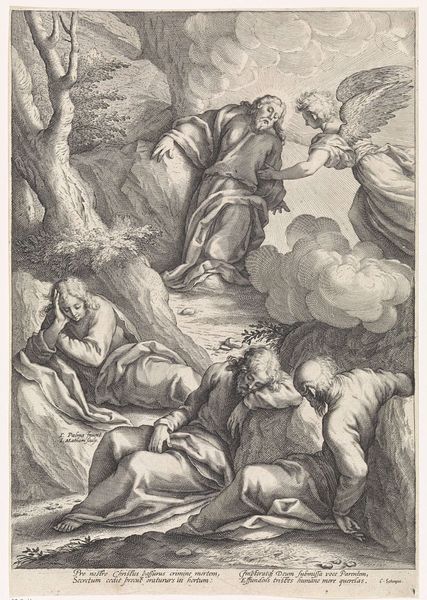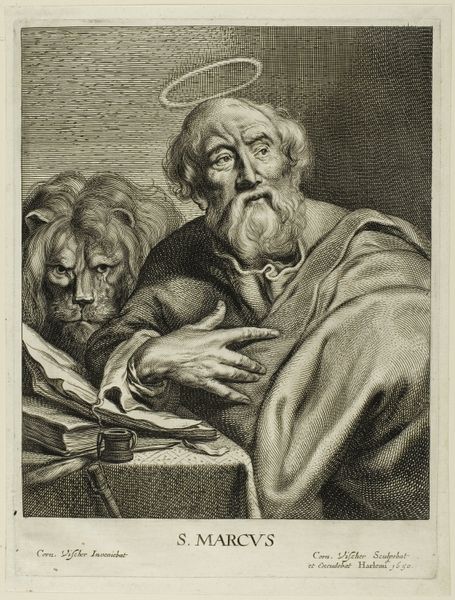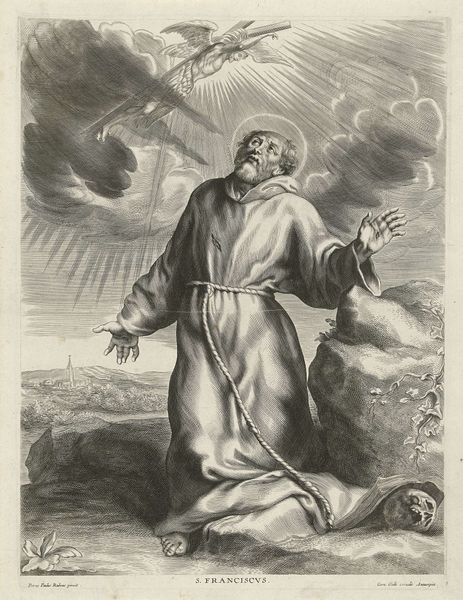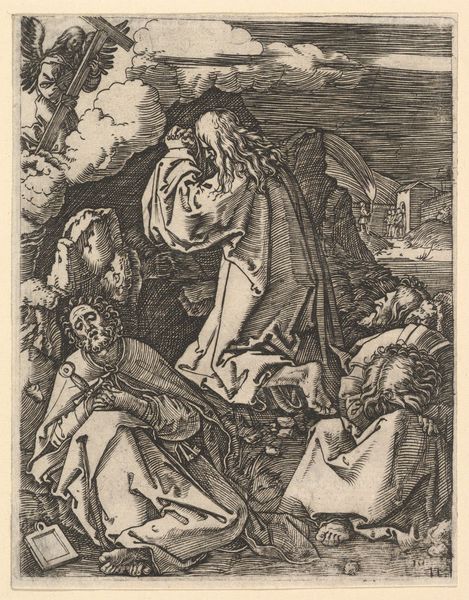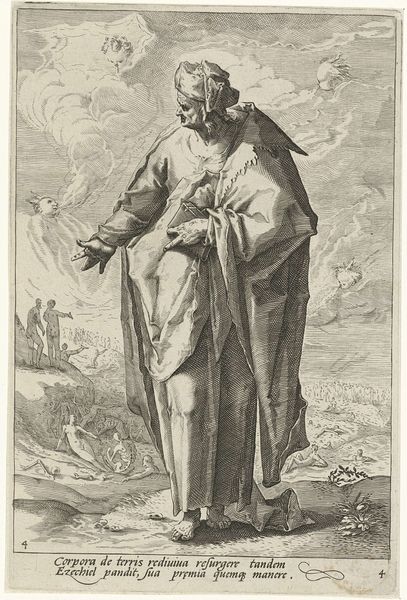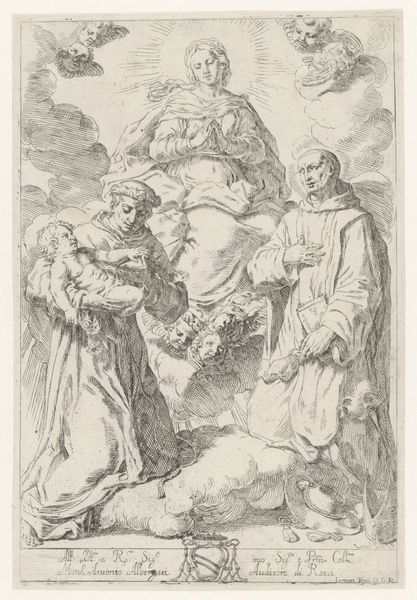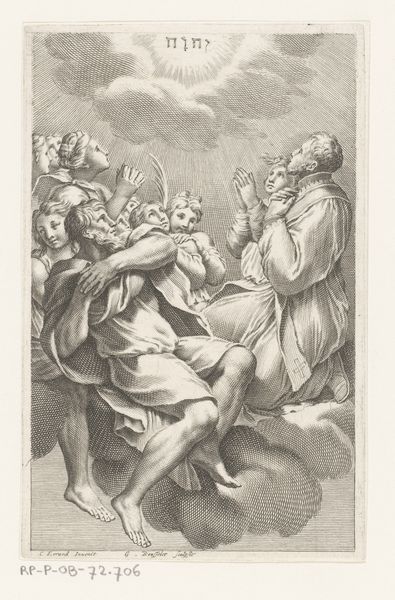
engraving
#
portrait
#
baroque
#
history-painting
#
engraving
Dimensions: height 430 mm, width 313 mm
Copyright: Rijks Museum: Open Domain
Editor: This is "Elia gezegend door God," or "Elijah Blessed by God," an engraving by Nicolaes Lauwers dating sometime between 1632 and 1652. The detail achieved in this black-and-white print is striking. What kind of symbols and historical imagery are layered into this work? Curator: Note the posture of Elijah. See how he holds his hands? It is a gesture of supplication and faith, a symbol recognized throughout centuries. Consider the image of God, positioned above, with hand outstretched. The light, emanating like a halo around Elijah’s head, connects with cultural ideas about sanctity, suggesting divine favor. It pulls from familiar iconographic traditions of visualizing religious figures. Editor: So the arrangement of figures, the way they’re posed, contributes to the story? Curator: Precisely. Even the presence of the angels emerging from the clouds is intentional. In many traditions, angels symbolize messengers from the divine, bearing witness or acting as intermediaries. The landscape in the background subtly grounds this in a biblical narrative, giving the viewer a setting that ties to religious storytelling. These symbols become a type of visual shorthand that instantly communicates layers of meaning. It reveals assumptions about faith and divinity to audiences through time. Editor: It's amazing how the composition alone can create a powerful narrative and make us understand deeper layers within the artwork. Curator: Indeed. Understanding how visual symbols resonate across generations provides deeper insight.
Comments
No comments
Be the first to comment and join the conversation on the ultimate creative platform.
